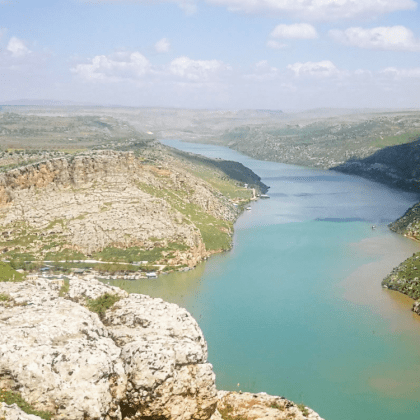A Specular History of PMLA: Visual Cultures and Literary Scholarship
The mutual gravitational pull of word and image is irresistible. In the late sixth century BCE Simonides of Ceos declared that “poetry is a speaking picture; painting a mute poetry,” and later the Roman poet Horace confirmed this equation in his formula “ut pictura poesis” (“as in painting, so in poetry”). Given the durability and variety of the word-image discourse from antiquity to modern mediations of textuality with digital and visual forms, what is its history in PMLA as the journal of record in literary studies? A gloss of the journal across time reveals how the visual field has been “read” in the light of the written and printed word, how language bears its own processes of visualization, and how literary and visual genres overlap and new media blur the distinctions between word and image.
Theoretical implications of the word-image debate arise early in PMLA’s history (Hard; Park). More recent work in iconology by W. J. T. Mitchell and others sharpened the critical distinctions between visual image and text, turning on how to “read” pictures (Heffernan) and how visual and textual modes of creativity have been (mis)understood through history (Dolan). The cinematic mediation of poetry invigorates this relation in the twentieth century, such as the effect of the cinématographe on the visual aesthetics of Stéphane Mallarmé (Wall-Romana). The theme of poetry’s visual dimension includes studies of concrete poetry and how its surrealist mode informs the foundations of modernist poetics (Walker) and architecture (Kaup). Essays dealing with visual representation in literary works were frequent in the 1970s (Hopkins; Maher; Carruthers), with a legacy in the 1990s (Williams; Jaffe). The integration of word and image by poets such as William Blake is grounded in the aesthetic technologies with which he worked (Eaves). The textual production of visual cues is only a step away from the genre of ekphrasis, a preoccupation of William Makepeace Thackeray (Fletcher) and George Eliot (Rischin; Downing) among many other nineteenth-century writers, as well as a foundational technique for some of the aesthetic principles of modernism in the work of Arthur Rimbaud (Connolly), Djuna Barnes (Glavey), and Samuel Beckett (Phelan).
Some recent directions in visual cultures include how disability studies can inform visual modes such as film and theater, displacing the so-called linguistic turn by virtue of a newly energized visual literacy (Siebers), and reconsiderations of the complex visual origins of Indigenous literature as a decolonizing counter to the dyad of orality and literacy (Teaiwa). As global culture becomes more saturated with digital media and other forms of visual representation, the visual field expands well beyond the literary and becomes an index of geopolitics (Mirzoeff). The subject of visual cultures in literary scholarship is enduring and widespread, tracking dominant modes of analysis such as close reading, comparative aesthetics, area studies, and the ubiquity of mass media. As such it constitutes a surprisingly acute index of the discipline’s history over the last century, illustrating and critically examining the place of literary studies within the wider cultural sphere.
Links to the PMLA archive:
Carruthers, Mary. “The Wife of Bath and the Painting of Lions.” PMLA, vol. 94, no. 2, Mar. 1979, pp. 209–22.
Connolly, Thomas C. “Primitive Passions, Blinding Visions: Arthur Rimbaud’s ‘Mystique’ and a Tradition of Mystical Ekphrasis.” PMLA, vol. 132, no. 1, Jan. 2017, pp. 101–18.
Dolan, Frances E. “Taking the Pencil out of God’s Hand: Art, Nature, and the Face-Painting Debate in Early Modern England.” PMLA, vol. 108, no. 2, Mar. 1993, pp. 224–39.
Downing, Crystal. “The Visual and the Verbal in Middlemarch.” PMLA, vol. 112, no. 3, May 1997, pp. 434–35.
Eaves, Morris. “Blake and Artistic Machine: An Essay in Decorum and Technology.” PMLA, vol. 92, no. 5, Oct. 1977, pp. 903–27.
Fletcher, Robert P. “Visual Thinking and the Picture Story in The History of Henry Esmond.” PMLA, vol. 113, no. 3, May 1998, pp. 379–94.
Glavey, Brian. “Dazzling Estrangement: Modernism, Queer Ekphrasis, and the Spatial Form of Nightwood.” PMLA, vol. 124, no. 3, May 2009, pp. 749–63.
Hard, Frederick. “Richard Haydocke and Alexander Browne: Two Half-Forgotten Writers on the Art of Painting.” PMLA, vol. 55, no. 3, Sept. 1940, pp. 727–41.
Heffernan, James A. W. “Reading Pictures.” PMLA, vol. 134, no. 1, Jan. 2019, pp. 18–34.
Hopkins, Viola. “Visual Art Devices and Parallels in the Fiction of Henry James.” PMLA, vol. 76, no. 5, Dec. 1961, pp. 561–74.
Jaffe, Audrey. “Spectacular Sympathy: Visuality and Ideology in Dickens’s A Christmas Carol.” PMLA, vol. 109, no. 2, Mar. 1994, pp. 254–65.
Kaup, Monika. “‘¡Vay Papaya!’: Cuban Baroque and Visual Culture in Alejo Carpentier, Ricardo Porro, and Ramón Alejandro.” PMLA, vol. 124, no. 1, Jan. 2009, pp. 156–71.
Maher, Annemarie E. “The Representation of Visual Reality in Perceval and Parzifal.” PMLA, vol. 89, no. 3, May 1974, pp. 537–50.
Mirzoeff, Nicholas. “War Is Culture: Global Counterinsurgency, Visuality, and the Petraeus Doctrine.” PMLA, vol. 124, no. 5, Oct. 2009, pp. 1737–46.
Park, Roy. “The Painter as Critic: Hazlitt’s Theory of Abstraction.” PMLA, vol. 85, no. 5, Oct. 1970, pp. 1072–81.
Phelan, Peggy. “Lessons in Blindness from Samuel Beckett.” PMLA, vol. 119, no. 5, Oct. 2004, pp. 1279–88.
Rischin, Abigail S. “Beside the Reclining Statue: Ekphrasis, Narrative, and Desire in Middlemarch.” PMLA, vol. 111, no. 5, Oct. 1996, pp. 1121–32.
Siebers, Tobin. “Words Stare Like a Glass Eye: From Literary to Visual to Disability Studies and Back Again.” PMLA, vol. 119, no. 5, Oct. 2004, pp. 1315–24.
Teaiwa, Teresa. “What Remains to Be Seen: Reclaiming the Visual Roots of Pacific Literature.” PMLA, vol. 125, no. 3, Oct. 2010, pp. 730–46.
Walker, Hallam. “Visual and Spatial Imagery in Verlaine’s Fêtes galantes.” PMLA, vol. 87, no. 5, Oct. 1972, pp. 1007–15.
Wall-Romana, Christophe. “Mallarmé’s Cinepoetics: The Poem Uncoiled by the Cinématographe, 1893–98.” PMLA, vol. 120, no. 1, Jan. 2005, pp. 128–47.
Williams, Raymond Leslie. “The Visual Arts, the Poeticization of Space and Writing: An Interview with Gabriel García Marquez.” PMLA, vol. 104, no. 2, Mar. 1989, pp. 131–40.






